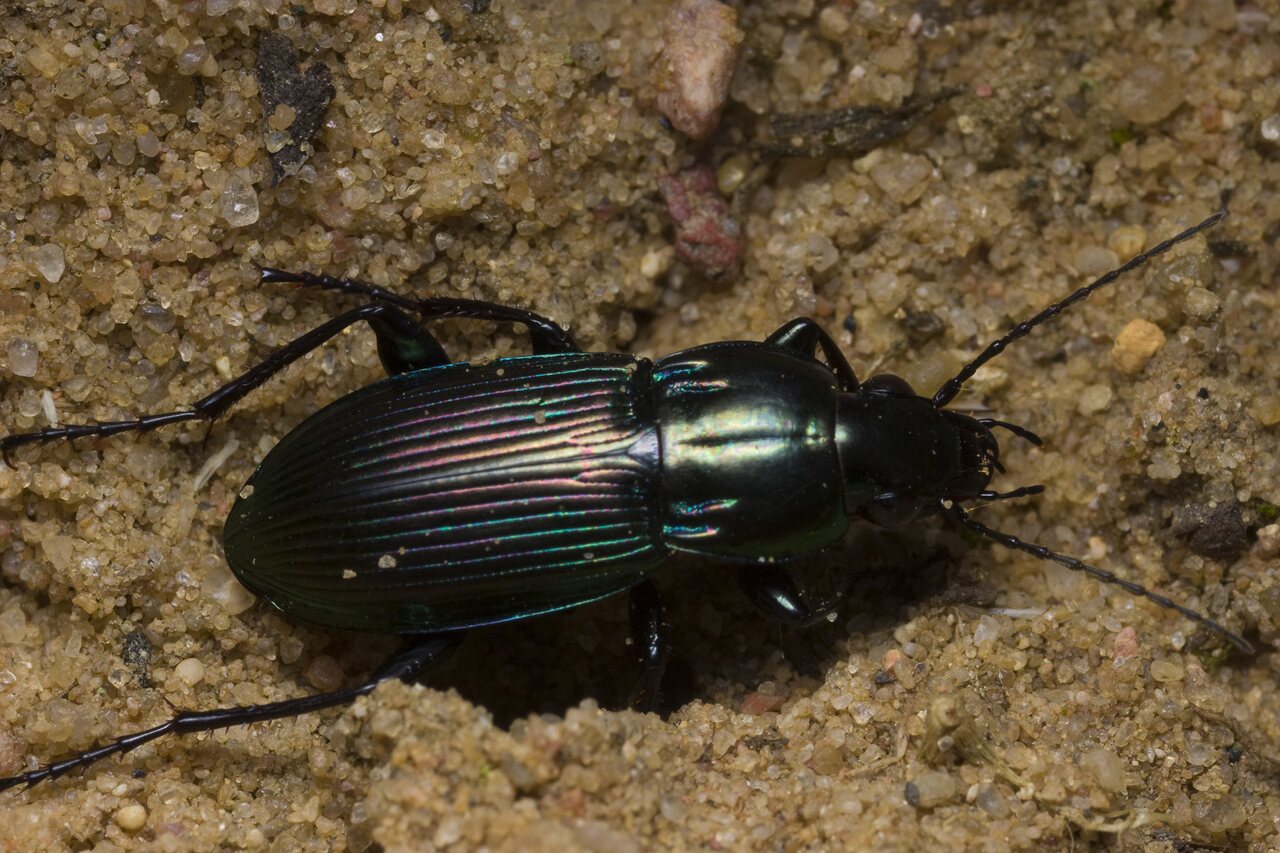
Poecilus lepidus · vikrusis smiltžygis
- Forskelligfarvet muldløber, Smuk metaljordløber
- vikrusis smiltžygis
- Heidekielspriet
- drogoń piaskowy
- sommarsollöpare
ukbeetles.co.uk/poecilus-lepidus
This species occurs locally across much of the Palaearctic region from Europe to Siberia and the Amur region of China. Through most of central Europe it is sporadic, whereas further north it tends to be widespread and local. In Europe it occurs on open sandy, peaty or gravelly soils exposed to the sun in grassland, road verges and arable land as well as open areas of dry deciduous or coniferous woodland, although not on coastal dunes or beaches. In Southern Europe it also occurs damp marginal situations on river banks etc., suggesting that exposure to warm sun is more important than soil moisture content, and this is also suggested by the species absence on northern slopes in upland and mountain areas.
Adults are present year-round although they are rarely seen in the winter when they remain in the soil or among litter etc., they are generally active from the first warm days of April and persist into October, peaking in abundance between May and July. Reproduction occurs in spring and summer, larvae from early matings may produce adults in late summer but later larvae will overwinter to complete their development in the spring. Adults produced in the spring will reproduce and go on to survive the winter reproduce again, while later adults will overwinter before reproducing. This life cycle is typical of central and northern Europe but in warmer Southern areas, where it is thought that larvae cannot survive hot and dry summers, it is usually an autumn breeder with overwintering adults and larvae. The species is wing dimorphic throughout the range but macropterous individuals tend to be rare and tend to have under-developed wing muscles, and while individual specimens have been found to disperse widely the species has not been recorded in flight. Both adults and larvae are carnivorous, feeding on ants, larvae and earthworms etc. which they hunt among soil and litter. Adults are diurnal but remain concealed among matted vegetation etc. in all but the warmest weather, and even then they rarely run in the open.
10-14 mm. Body metallic green, bluish, coppery to black, appendages entirely black. Head with two setae beside convex large and convex eyes, antennae densely pubescent from the fourth segments; segments 1-3 with a fine dorsal ridge. Pronotum broadest about the middle and straight or only slightly sinuate before obtuse posterior angles, lateral margins narrowly explanate throughout, surface with two latero-basal fovea; the outer shorter and delimited externally by a short keel, the inner longer and deeply impressed. Elytra with deeply impressed b8ut almost impunctate striae and almost flat interstices, the third with three or four setiferous punctures, epipleura crossed before the apex. Hind tibiae with 6-8 very fine setae on the inner margin, basal segments of hind tarsi furrowed externally. Terminal segment of all tarsi setose ventrally. In males the basal front tarsal segments are dilated and the elytra are shiny, in females the tarsi are normally developed and the elytra are dull. Easily distinguished among our UK members of the genus by the entirely dark antennae.
‥
0 comments
Add a comment
Comments